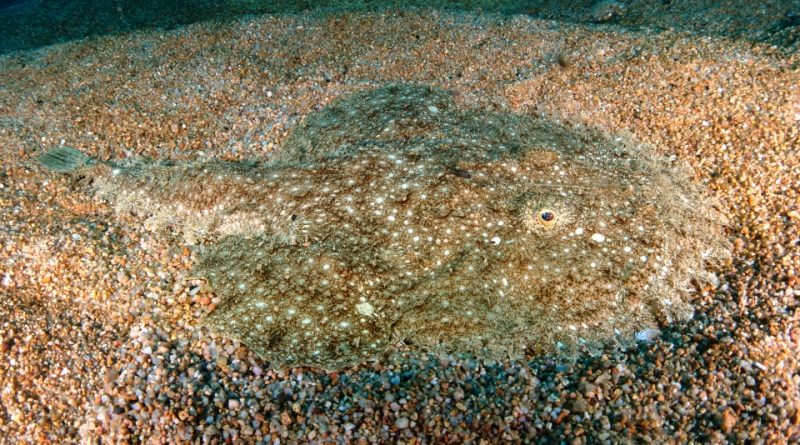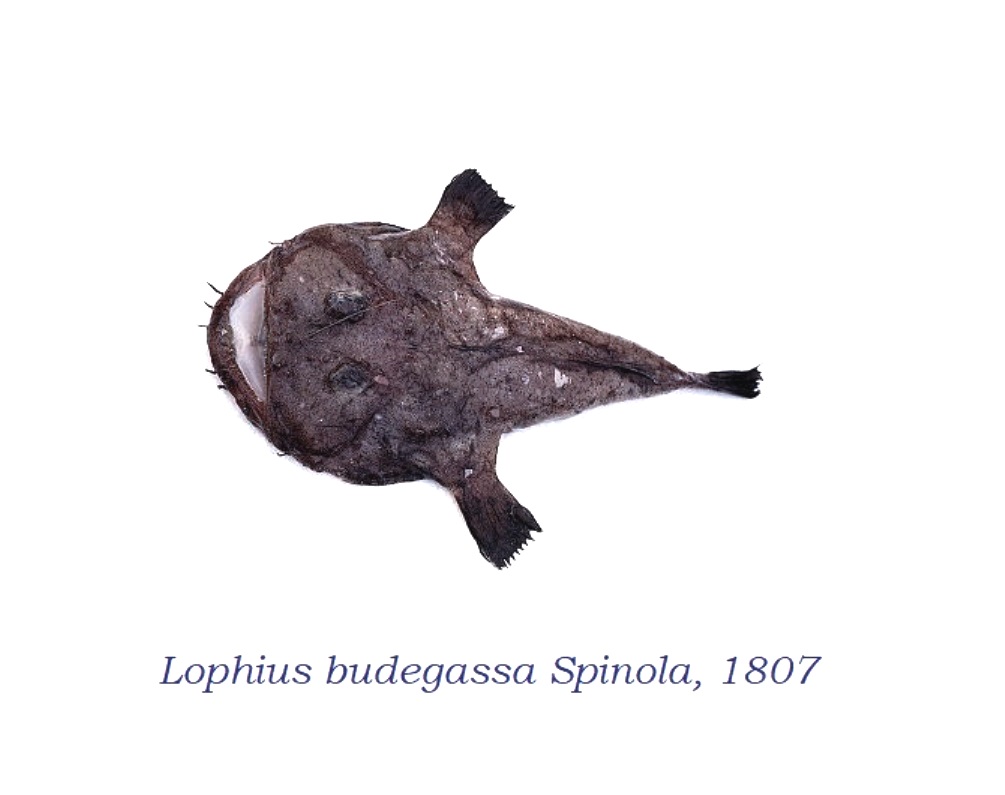Lophius budegassa
Lophius budegassa
The blackbellied angler (Lophius budegassa Spinola, 1807) is a sea fish belonging to the Lophiidae family.
Systematics –
From a systematic point of view it belongs to:
Eukaryota domain,
Kingdom Animalia,
Phylum Chordata,
Class Actinopterygii,
Order Lophiiformes,
Suborder Lophioidei,
family Lophiidae,
Genus Lophius,
Species L. budegassa.
The terms are synonyms:
– Lophius bugadessa Spinola, 1807;
– Lophius parvipinnis Cuvier, 1829;
– Lophius piscatorius subsp. budegassa Spinola, 1807.
Geographic Distribution and Habitat –
The Lophius budegassa which lives in the Mediterranean Sea, the Black Sea and the Atlantic Ocean between Senegal and the British Isles.
In Italy it is mentioned everywhere but it is more abundant in the Adriatic.
Its typical habitat is that of soft or even compact seabeds, between 50 and 800 m of depth where it lives perched directly on the seabed.
Description –
Lophius budegassa is a fish similar to the other similar species Lophius piscatorius, with a color that tends towards reddish while the belly tends towards black (due to the black peritoneum, clearly visible if the fish is eviscerated) and with dimensions that reach maximum 70 cm. It also has pronounced sexual dimorphism, with the male being much smaller than the female.
Furthermore, the distinction with the similar species can be made for having the bait (the fleshy end of the first ray of the dorsal fin used precisely as a bait for preying) on the fisherman ray which is simple (in L. piscatorius it is biloba).
The spines found behind the eye have no flaps of skin and are much shorter than the first (the one carrying the bait) while in the species L. piscatorius it is the other way around.
The dorsal fin has a maximum number of 9 rays, while they are 12 in L. piscatorius.
It also has a less wide head and all the skin fringes are less developed.
Biology –
The Lophius budegassa is a fish whose reproductive period goes from the end of autumn to the beginning of winter, and should occur towards the greater depths. However, it has been found that the reproductive period of this species lasts for several months; moreover, the growth rate of young people has proven to be faster than previously expected.
The reproduction of this species is singular.
During mating, the male bites the female in her ventral area, dissolves her skin in the area of the bite and through enzymes, remains welded to her body for life, sharing blood vessels with her. In this way the male feeds on the nutrients of the female and becomes a reservoir of fertilizing sperm for the eggs. Males at birth have an urgent need to find a female, as their digestive system quickly atrophies, being the only way they survive by taking nutrients from a female’s bloodstream. In return, the female always has sperm available to fertilize the eggs. When this species was first documented, only the females, to which a parasite was attached, were known. It was later learned that these parasites were actually males of their own species.
It is a benthic species that lives on coastal bottoms mixed with sand and mud and provided with vegetation and on muddy bottoms between 100 and 300 meters but being able to go up to 800 meters deep especially in the summer period.
Ecological role –
Lophius budegassa was described by Maximilian Spinola in 1807.
This fish feeds on any living organism that passes within its reach. It is said that it can even prey on gulls and other marine birds, even if it has not been verified if this is true; however, it is known that its favorite preys are flat fish.
It is caught with bottom trawls and bottom lines or longlines of any kind.
The meats are excellent and some authors even define them as better than the related species L. piscatorius. It is a traditionally fished and commercialized species.
Guido Bissanti
Sources
– Wikipedia, the free encyclopedia.
– GBIF, the Global Biodiversity Information Facility.
– Louisy P., 2016. Guide to the identification of marine fish of Europe and the Mediterranean. Il Castello Editore, Milan.
– Nikiforos G., 2008. Fauna of the Mediterranean. Giunti Editore, Florence.
Photo source:
– https://inaturalist-open-data.s3.amazonaws.com/photos/60198003/original.jpg


